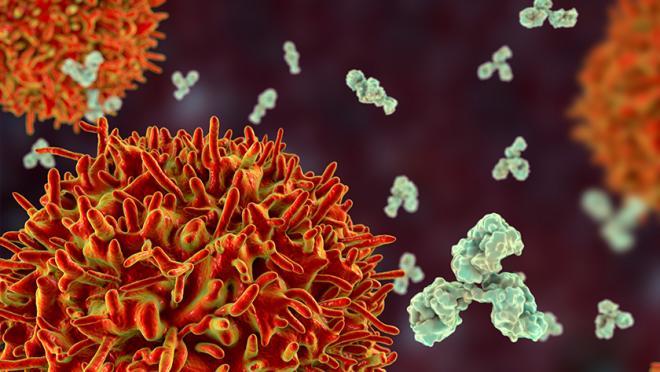
Researchers at UHN’s Schroeder Arthritis Institute have deciphered the immunological signature of flares in systemic lupus erythematosus (SLE), paving the way for improved prognosis and treatment.
SLE is a chronic autoimmune disease that affects many body systems. SLE can be a complex puzzle for clinicians because it can present very differently in patients. Additionally, in approximately 80% of patients, SLE is marked by intermittent flares in disease activity, interspersed with symptom-free periods.
“Managing SLE can be quite challenging due to the unpredictable nature of the condition. Pre-empting flares is important for preventing tissue damage, but we have a limited arsenal of tools to predict whether a given patient will experience a flare and when it will happen,” explains Dr. Joan Wither, a Senior Scientist at the Schroeder Arthritis Institute and senior author of the study.
“A major goal for researchers today is to determine the immune processes that drive changes in SLE activity to allow clinicians to closely monitor high-risk patients and offer pre-emptive treatments.”
To accomplish this, Dr. Wither’s team examined the immune cells present in blood samples from men and women with or without SLE. The team grouped people with similar immunological profiles and tracked immune changes at six-month and 12-month follow-up visits.
The team studied 47 distinct cell populations in samples from 46 patients experiencing flares, 25 patients not experiencing flares and 16 healthy controls.
The study revealed a spectrum of immunologic profiles linked to SLE activity. Based on their profiles, participants fit into five clusters, each characterized by unique clinical phenotypes—or observable disease features.
Levels of certain immune cells, such as age-associated B cells and T peripheral helper cells, predicted SLE activity one year later. For example, patients with higher levels of B cell activity were more likely to experience flares at their initial clinic visit and, if B cell activation continued or subsequently developed, have sustained or recurrent high disease activity over the subsequent year.
Conversely, patients who had elevated levels of T helper cells in the absence of changes in B cell activity, or those with elevated levels of type 1 helper cells and innate immune cells, typically transitioned to a symptom-free state during the follow-up period.
These findings underscore the role of dysregulated immune responses in driving SLE flares and suggest that age-associated B and T peripheral helper cells could serve as biomarkers for ongoing or recurrent flares.

When the immune system is activated by a pathogen, distinct cell populations interact to mount a response. In SLE and other autoimmune diseases, immune cells mistakenly attack the body’s own tissues.
Dr. Kieran Manion, a former postdoctoral researcher in Dr. Wither’s lab and the first author of the study, emphasizes the clinical significance of the team’s findings: "Our study uncovered distinct immunological profiles in SLE patients that are associated with different ways the disease can manifest. By using these profiles to stratify patients, we can improve their prognosis and offer more personalized therapies to mitigate flares and improve their long-term outcomes.”
This work was supported by the Canadian Institutes of Health Research, the Pfizer Chair Research Award, the Arthritis Centre of Excellence, the Schroeder Arthritis Institute and UHN Foundation. Dr. Wither is a Professor in the Department of Immunology at the University of Toronto.
Manion K, Muñoz-Grajales C, Kim M, Atenafu E, Faheem Z, Gladman DD, Urowitz M, Touma Z, Wither JE. Different Immunologic Profiles Are Associated With Distinct Clinical Phenotypes in Longitudinally Observed Patients With Systemic Lupus Erythematosus. Arthritis Rheumatol. 2023 Dec 10. doi: 10.1002/art.42776.




